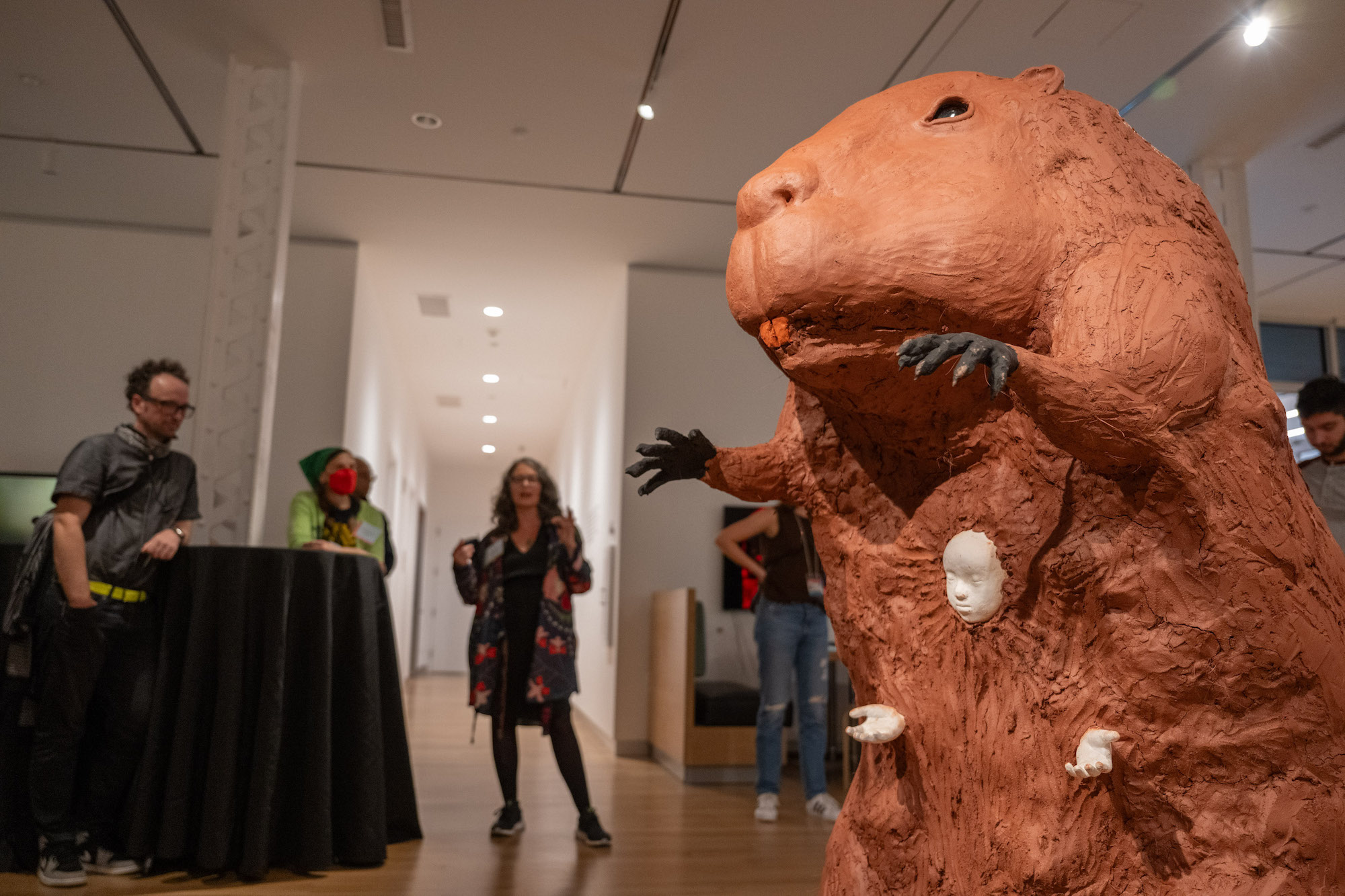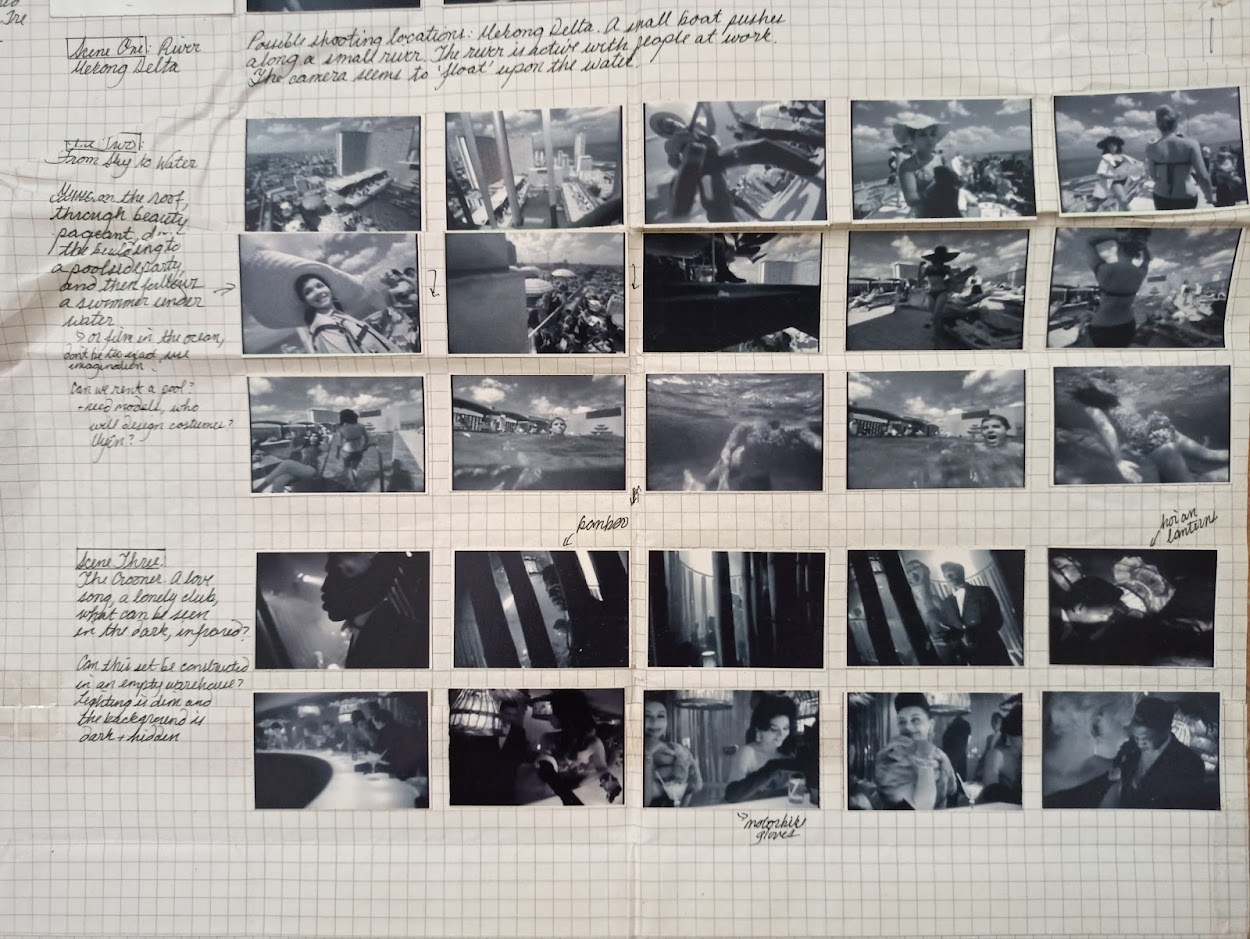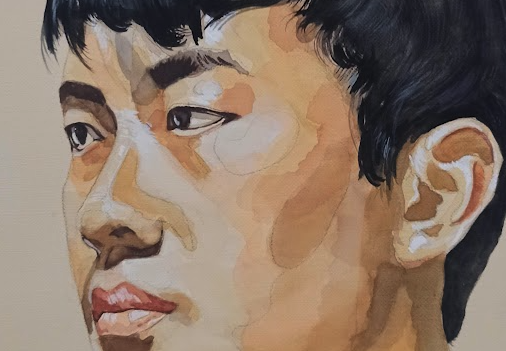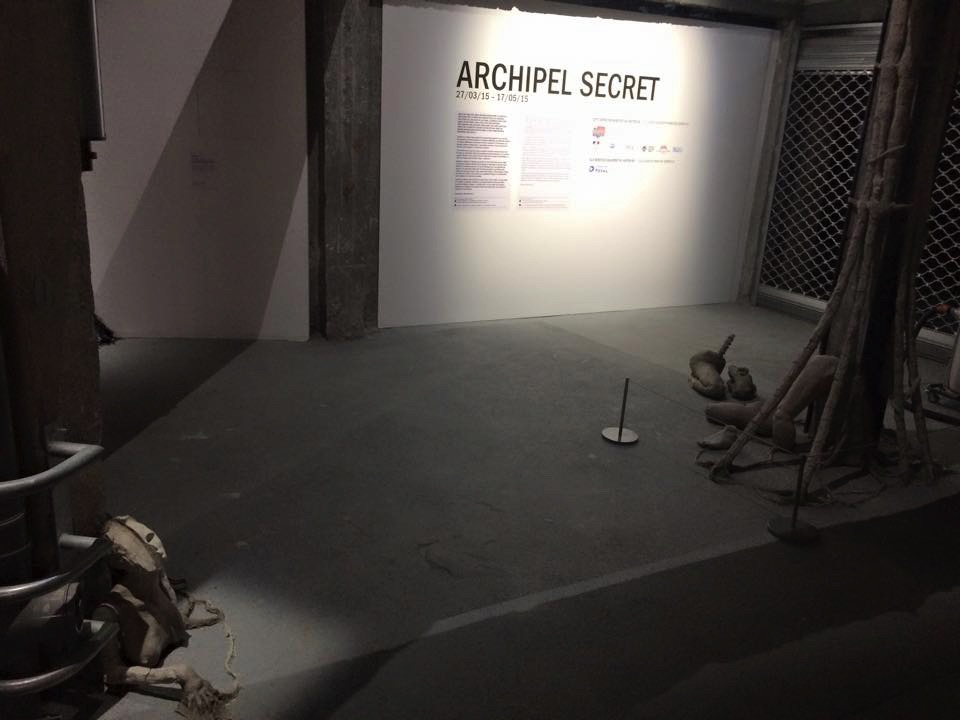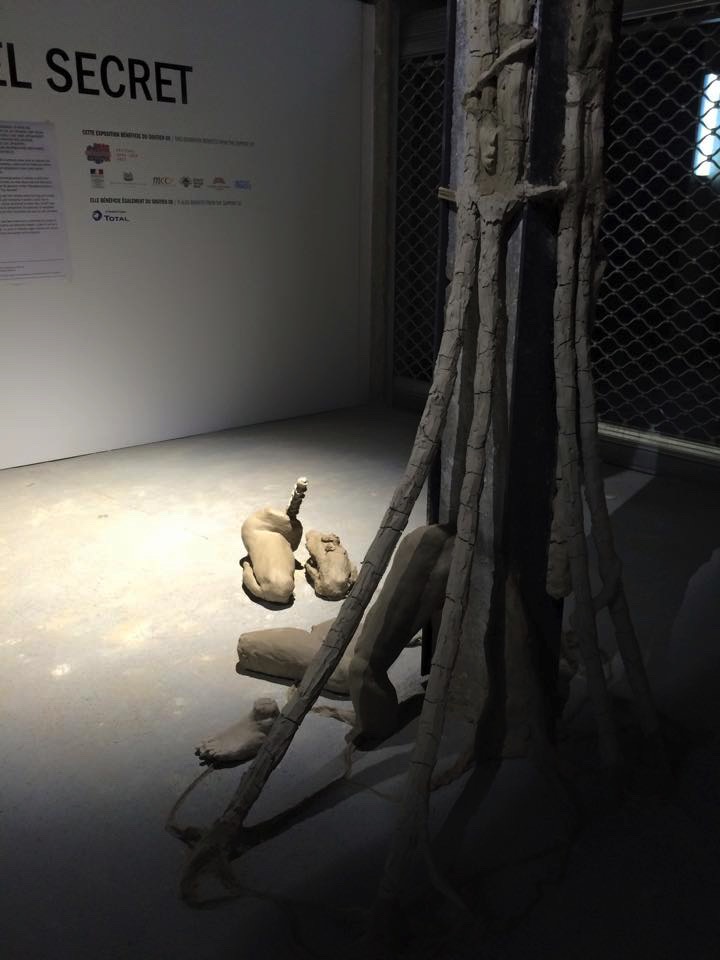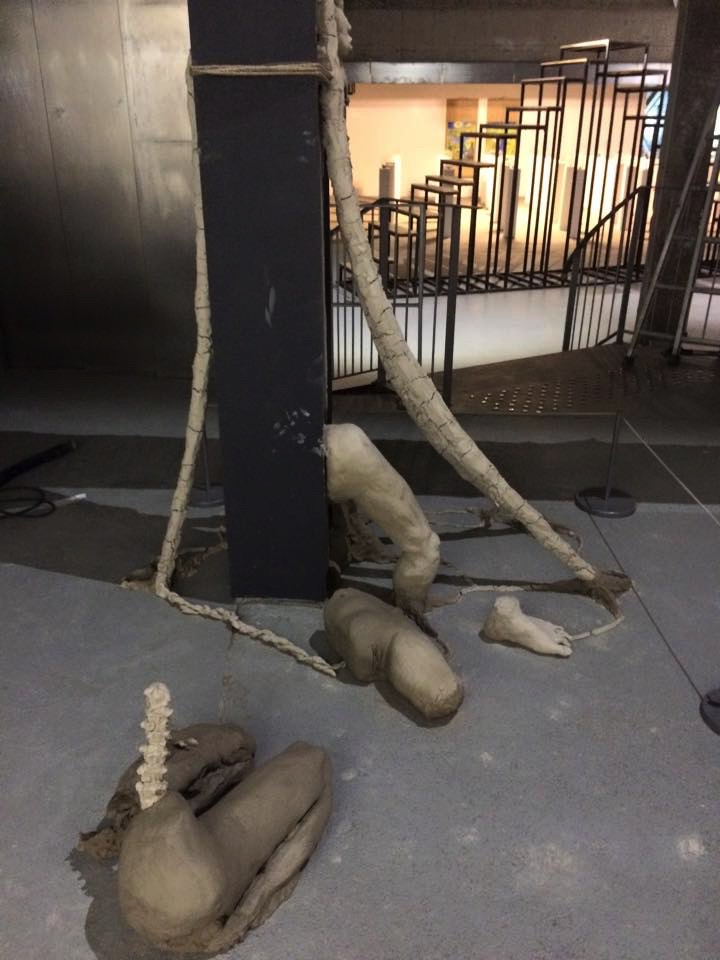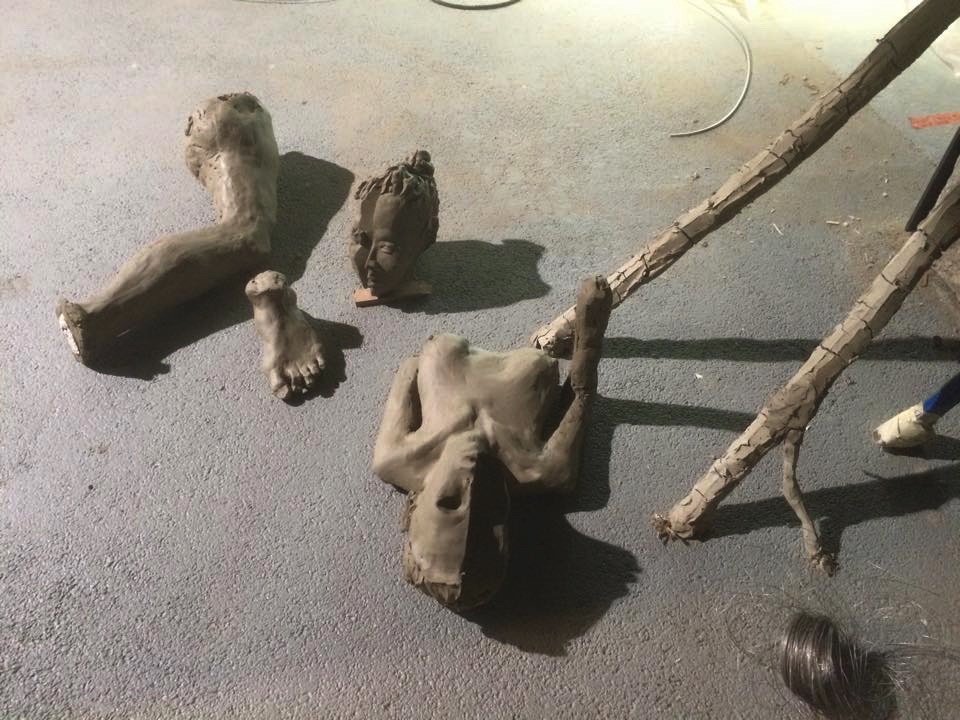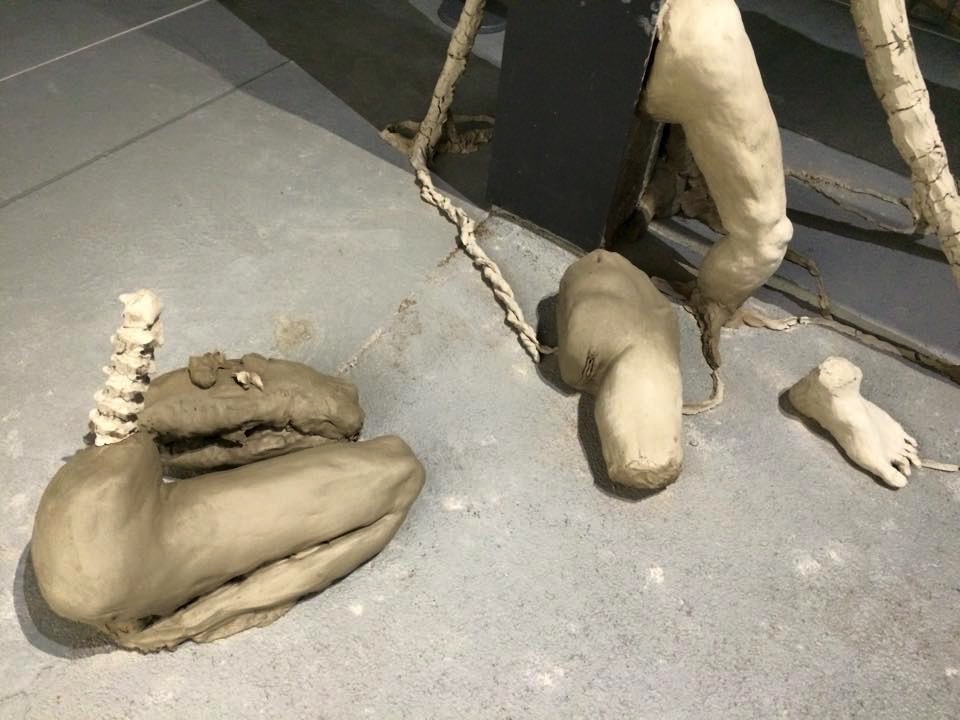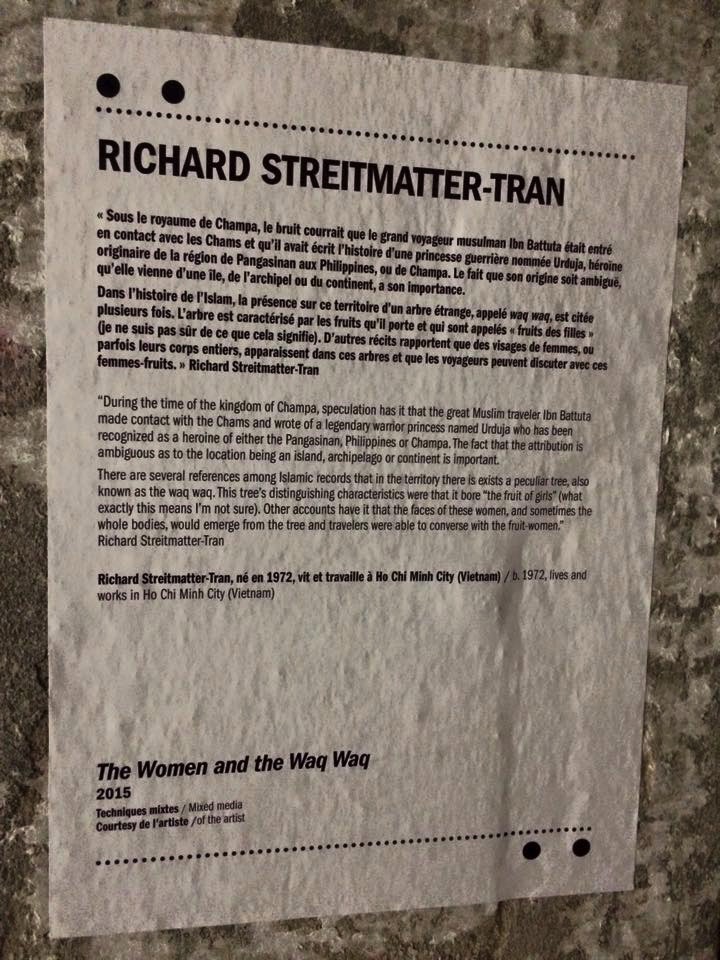Archipel Secret/Secret Archipeligo
Palais de Tokyo, Paris
March 27 - May 17, 2015
Curated by Khai Hori
The installation is specific to the subterranean architecture of the Palais de Tokyo. Using unfired clay, i recreated the root system of the types of trees overgrowning the ancient ruins in Cambodia. Attached to the roots grow parts of women, who according to the legends, sprout from the Waq Waq tree.
---
The origin of this project begins with the Cham peoples who once occupied one of the largest and most influential kingdoms in Vietnam. Unlike their neighboring Khmer rivals in Angkor, the present day Chams and their culture are performed in the minority. During the time of the kingdom of Champa, speculation has it that the great Muslim traveler Ibn Battuta made contact with the Chams and wrote of a legendary warrior princess named Urduja who has been recognized as a heroine of either the Pangasinan, Philippines or Champa. The fact that the attribution is ambiguous as to the location being an island, archipelago or continent is important. It is also fact that among early Arab texts that the eastern limit of imagination is often referred to as the island (or area) of the Waq Waq:
“There is 6-page entry on Waqwaq in The Encyclopaedia of Islam, mainly a debate amongst oriental scholars as to whether Waqwaq referred to a real island, say, Madagascar or Japan (or Sumatra), or whether it was purely imaginary: 'Waqwaq referred to a country just beyond one's reach in the general direction of the east' or 'some island a little off the usual path of Arab traders'.
Persian author Hudu al-‘Alam, dated 982, relates that:
“East of [China] is the Eastern Ocean; south of it [Vietnam] the confines of the Waq Waq, the Sarandib mountain, and the Great Sea… Waq Waq belongs to the hot zone.”
The Waq Waq as a conceptual territory then becomes a metaphor for a “journey to the east” with a unique flavor coming from a Muslim narrative as opposed to the more familiar Western European “Journey(s) to the East” of Hermann Hesse and Le Courbusier.
There are several references among Islam records that in the territory there is exists a peculiar tree, also known as the Waq Waq. This tree’s distinguishing characteristics were that it bore “the fruit of girls” (what exactly this means I’m not sure). Other accounts have it that the faces of these women, and sometimes the whole bodies, would emerge from the tree and travelers were able to converse with the fruit-women.
In other tales, the distinction between the territory (island/archipelago) and the object (the tree) are less defined. Sometimes even the tales themselves begin to bleed into one another. In other accounts, with parallels to Greek accounts of the Amazons, is the Island of Women.
“In contast to the Islands of Spice, the long and colorful tradition of an island of women somewhere in Southeast Asia defies identification and probably belongs to one of the region’s purely mythical landscape. One source dating back about a thousand years, the geographer ‘Aja’ib al-Hind, relates the story of a ship in the Sea of Malayu (Malaya), en route to China , which after encountering a storm landed on an unknown island. As the sailors were disembarking from the ship,
A party of women arrived from the interior of the island, the number of which God alone could count. They fell on the men, a thousand or more to each man. The women carried them off to the mountains and forced them to become instruments of their pleasure.
All but one of the men died from sexual exhaustion. The one survivor escaped with one of the women in a boat (curiously enough, filled with gold). This supposed island is also described as “situated at the limit of the sea of China”, and therefore possibly referring to Waq Waq itself.
See Exhibitions: Secret Archipeligo
DETAILS
2015
Site specific installation
Unfired stoneware
